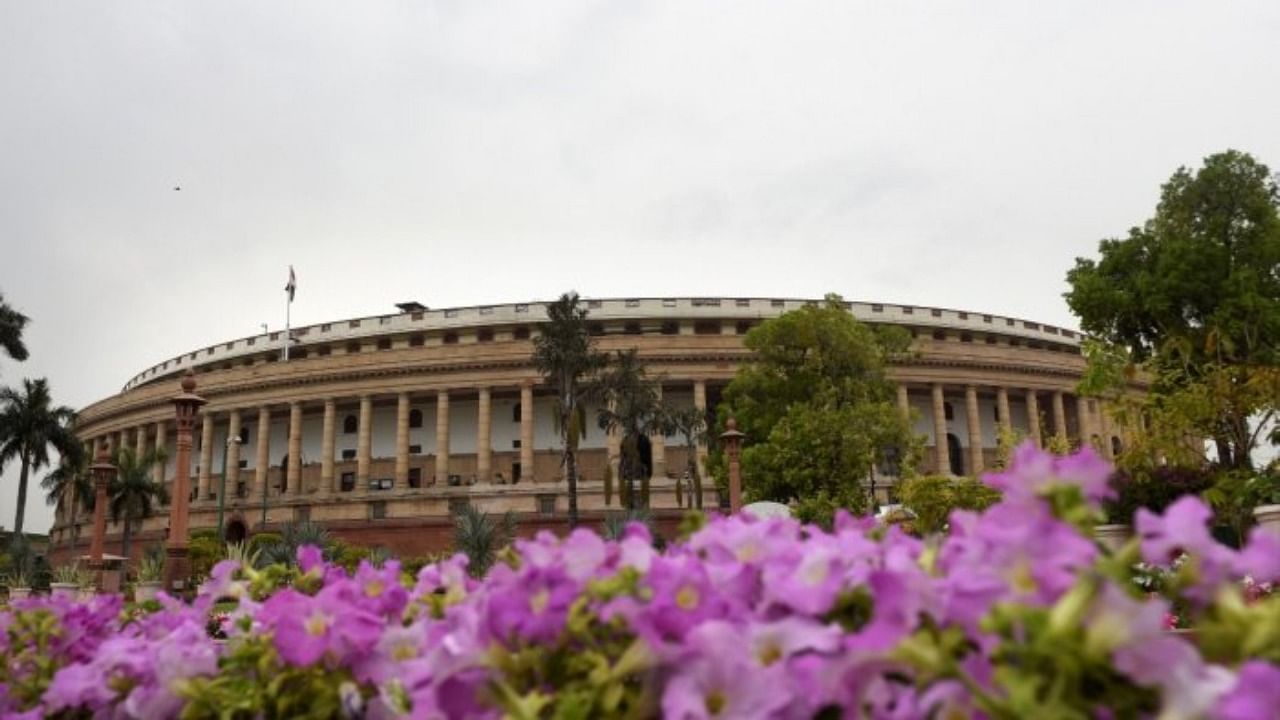
In the Winter Session of Lok Sabha last year, Tamil Nadu MP, Kanimozhi struggled to pronounce Atmanirbhar Bharat Abhiyaan. Others corrected her. Her comical remark followed, on how welfare schemes being named in Hindi were a ‘problem’ for non-Hindi speakers, like herself.
While the media houses largely treated the event as in-house humour, the underlying sensitivity of an inclusiveness debate was overlooked. “It is very difficult and that is the problem,” said Kanimozhi, “you don’t understand that we speak different languages. Either it can be in English or you can have it in regional languages. So, all of us can say it,” as she stressed with a grin on her face, audible chuckles from both sides of the house could be heard.
While her statement referred to the names of the NDA government’s welfare schemes, the ‘problem’ as she highlighted, predates NDA’s ascent to power -- right back to the Congress government of the 1980s. Most schemes from 1960-1988 were named in English (with Hindi translations and titles). The titles were descriptive of their intent: ‘Comprehensive Crop Insurance Scheme (1985)’, ‘Development of Women & Children in Rural Areas (1982)’, and ‘Draught Prone Area Programme (1973)’ to name a few. In 1989, Jawahar Rozgar Yojana (employment to the rural unemployed) was the first significant nation-wide scheme named in Hindi. It was followed by Ganga Kalyan Yojana, Bhagya Shree Bal Kalyan Policy, and so on.
Linguistic inclusivity was often disregarded while naming schemes. About 30 per cent of the Indian population doesn’t recognise, and 44 per cent doesn’t speak, Hindi as per the census 2011. Over 11 languages have a million speakers plus. With this significant dataset, a welfare scheme whose name a large population can not comprehend, restricts a rightful access to it; it also cries for active bureaucratic redress.
A constitutional approach is required to prevail over the now clichéd Hindi imposition dispute. Union under Article 38 (DPSP) of the Constitution ensures ‘social and economic democracy through a welfare state’. Article 1 confirms India to be a union of the states. A combined interpretation reveals a collective welfare wherein the state interests must reflect in the Union’s approach rather than a majoritarian interest. Formulating a scheme in a language that’s inaccessible to citizens overthrows the intent of any welfare state. Despite the ethical-legal arguments, India lacks legislative measures guiding the Union to have as base inclusivity, founded on accessible language. If MPs or literates cannot comprehend even the title of a central scheme that is meant to benefit them, the threat of not reaching every last citizen is imminent.
Several states collaborate with the Union to extend the benefits of their schemes to the whole country. The Union too has inspired certain state-schemes to enforce nationwide implementation.The midday-meal scheme of TN from the 1960s (later changed as a national scheme in 1995) is a classic example of how the State-Union co-operation may champion inclusivity.
Similarly, central schemes can be translated to regional languages by states proactively. As the Union is vested with the duty by the Constitution to abide by the official languages, it is ideal that the Union creates schemes in English and Hindi; yet make efforts to name titles descriptive of their policy intent.
Only the Union can ensure the schemes are concisely named. Several institutions and think tanks can be encouraged to translate through official government projects. These are existing legal circumstances, oversighted by appointed legal luminaries and academic scholars. Collective action in drawing welfare schemes can present an idyllic closure to the politicised ‘inclusiveness’ debate.
A joint effort among states and the Union, while embedding inclusivity, alone can justify India’s ethos of being a Socialist Democratic Republic.
(Abhinav is a Delhi-based advocate and Vasishtan is a technology lawyer)